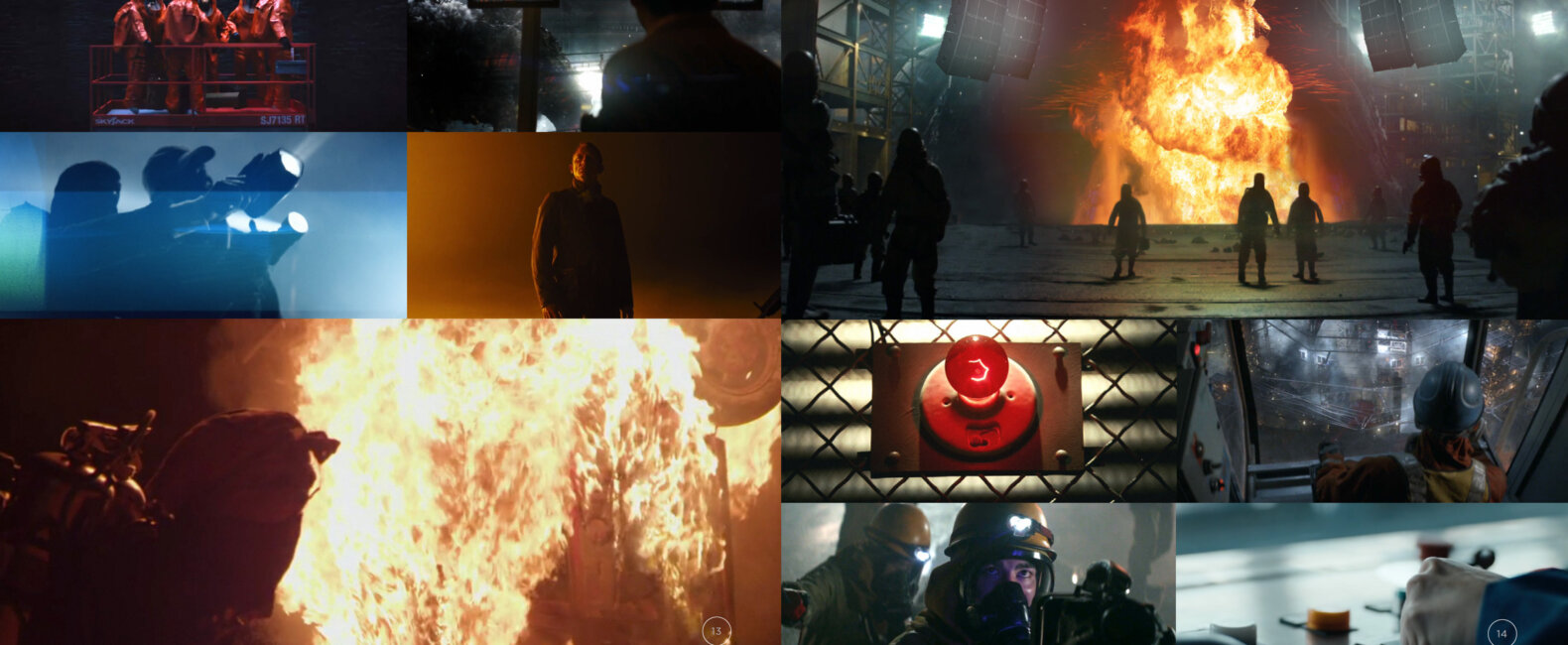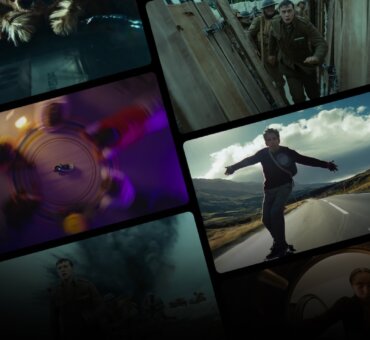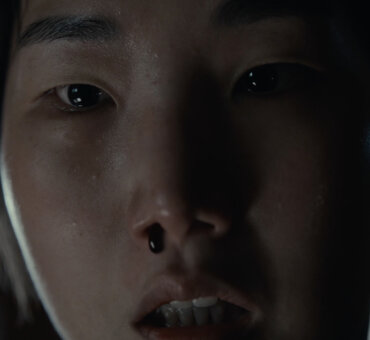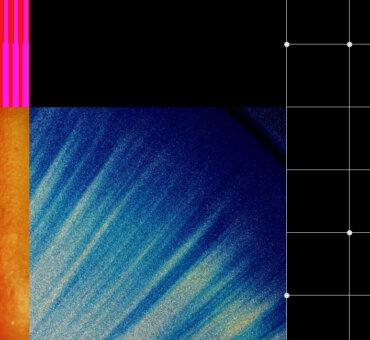Nobody makes treatments quite like Diego Contreras. In the years since he left BBDO NY, Diego has directed commercial projects for high-profile clients including Lincoln, GE, Reebok, and more. An impressive résumé for anyone, let alone someone relatively new to the game. And while there are plenty of reasons for his success (an insane work ethic, for one), we’re pretty sure one of the biggest reasons is his devotion to creating meticulous, beautiful, vision-packed treatments. For Diego, these treatments are more than just sales tools. They’re essential creative exercises through which directors not only express their vision — they discover it.
We asked Diego to share some lessons he’s learned about creating treatments for commercial films.
Here’s Diego:
1. Vision Before Visuals
I’ve learned to avoid starting my treatments with visuals. I’ll write as many thoughts and ideas as possible in a Word doc, and then I’ll use that as my inspiration to find the visuals later. The problem with going with images first is that you’re apt to repeat what somebody else has already done. We’re all guilty of pulling stills and references from the same beautiful films and spots we see on Vimeo. That’s why so much of the work starts to look the same. You begin to see familiar shots, angles, and locations popping up in different projects.
So my number one piece of advice for improving your treatments is to find a strong and defined vision for the project first. Imagine it in your head and then write down where you want to take the project. Find that thing that makes it uniquely yours. I write about everything from the music to the edit to the pace. I write about the transitions, the lighting, and the camera movement. I think of locations where no one has shot before. When you start describing all those little details, it begins to flow toward a stronger vision for the piece. Once you’ve figured that out, then you should start looking for imagery. Visuals should back your vision, not the other way around.
2. The Visuals Should Tell the Story
When the time comes to find the visuals, I strive to go after images that tell the story. Each image should have a purpose and complement the script and the words you’re writing. Don’t drop in a bunch of reference imagery just for the sake of it or to fill up space. A treatment with lots of beautiful, moody, and cinematic imagery that’s ultimately disconnected can seem cluttered.
If you’re dedicating an entire page to mood references, make sure those images are carefully placed to illustrate your vision and tell a story. Very often you’ll be sending a treatment to busy agency creatives who have either 10 minutes to read it or no time at all. If that happens, you want to make sure the story comes across through these visuals alone. If you manage to catch their attention first, then the chances of them reading every word that you carefully crafted should go way up.
Finally, make sure you’re going for unique and interesting images that will make your treatment stand out. Go beyond Vimeo and look through the work of photographers from the past and present, watch movies, browse photo books, or find inspiration from painters and their artwork. And stay away from the horror of pixelated images or stock photos!
3. Present Your Take (Why Would They Need You Otherwise?)
Agencies spend a ton of time on their scripts. Sometimes they’ll devote six to eight months to writing a single commercial. Then they struggle through hundreds of rounds trying to sell a script to clients who just want to see more and more. By the time a script is finally approved and ready for production, it’s basically their baby. So when they give you the chance to present a treatment, they’re not expecting you to regurgitate their own words, drop in some cool images, and call it a day. They’ll be able to see right through that.
What most good agencies are expecting is to see you take their idea and run with it. They want to see how much more depth you can put into it, how you can build on it, how you can take it to the next level. They want your take. If you’re just describing how you’re going to execute their idea, then you’re missing something. They might as well hire a talented DP to do the job. A strong vision is why they’re coming to you, and that’s your most valuable asset.I’ve heard that treatments aren’t always relevant in winning a project. Or sometimes the decision to hire a director has been made before the agency even sees a treatment. I don’t think that’s always true. I’ve won some big projects while going up against amazing directors who I highly admire and consider to be much better than I am. So you should give it your all and hope for the best.
I’m a bit nosey, so I’ll ask the agency why I won. And most of the time it’s because they got to see their idea reimagined in a way that felt much bigger than they originally envisioned it. For example, the “Unimpossible Missions” campaign I did for GE and BBDO was originally meant to be a docu-style project with a very small crew. My treatment presented a completely different take on it, and the final product reflects that. Creatives love it when they see a strong vision and lots of personality behind your treatment. It shows how much you care.
But be warned: I lose projects for the same reason I win them. When you offer your strong take in a treatment, you give people something to be excited about — but you also give them something to say no to.
4. Say It with Your Own Words
Something interesting I noticed after becoming a director is that the majority of the treatments — at least in the commercial world — are written by treatment writers and designed by visual artists who are not the director. There are writers and visual artists whose lone job is to put these treatments together. That might seem strange. But many directors are busy shooting other projects or even movies, so they have no time to worry about treatments. Agency producers, who often read the treatments first, know this. So they will appreciate it when it’s clear that the words are coming from you and not someone whose job it is to write them for you. There’s value in a treatment that has a clear voice and personality that is yours alone. I’m a bit obsessive, and I try to do these treatments all on my own. But that’s because I believe everything about them should point to who you are. They should read and sound like you.
Think about who you’re talking to. You’re pitching to young agency creatives and creative directors who are very much like you. They are talented and smart people who are allowed to joke around and be themselves at work. These aren’t guys in suits working in a corporate environment and drinking their coffee at 8 a.m. So there’s no need to sound all professional and try to impress anyone with flashy marketing words or lofty language. Words like visceral or intrinsic aren’t how normal people speak. Just be yourself and write in a way that shows how much you love and care about the project. Try to make it fun. Drop in a life story or a few jokes. Throw in a few emojis. If they don’t like it, that’s fine. The project probably wasn’t meant for you then. It’s better not to get a job by being yourself than to land a job and then have to pose as something you’re not.
5. Make Your Own Visuals
This might seem like a small or ridiculous thing, but trust me, it’s important. I’ll pull all-nighter Photoshop parties creating new images that show off my vision for specific scenes. Sometimes a reference doesn’t exist, and that’s probably a good thing because that means it hasn’t been done before.
I’ll also go to Photoshop to bump up all of my visuals. I’ll color grade the images in every page so they’ll work together. I’ll add a bit of grain to make things more filmic, remove competitive logos or products, and swap out backgrounds to match my proposed locations. I’ve even gone to the extreme of replacing all the cars in every image for a car treatment. It’s a bit over the top, but it helps people visualize exactly how your film will look. Clients have an eagle eye for the smallest details like these. And trust me, they can freak out if they see something like a competitor’s product in the treatment. You don’t want to lose a project over something that small. So it’s a good habit to comb through your treatments and pay attention to those little details. It can be annoying, but it’s worth it in the end.
6. Keep It Short
There’s an average of 30 to 40 shots in a 60-second commercial, and I sometimes shoot a hundred. Some of my treatments are 40 pages long. I like to tell longer stories, so that’s just my style. But it’s important to scale back too — to be concise. Shorter can also be better. Sometimes it’s good to leave a few things to the imagination and not give it all away at once.
It’s great to dream big and be ambitious, but there’s also nothing worse than getting yourself in a situation where you’re held accountable to every promise on a treatment. You can end up having to shoot a lot more stuff than you have time for in a day. I’ve been on shoots that felt like I was on a moving train with no time to fully craft or light shots with my DP. Some of the best filmmaking happens when you give yourself some time and freedom to be spontaneous and explore new ideas on set. This sounds cliché, but it’s better to under-promise and over-deliver.
7. Be Realistic
If you’re just starting to work on commercials and as you dive into creating treatments, it’s good to remember that these projects aren’t ultimately yours. The unfortunate reality is that we’re not making art. There’s always some product being sold or some marketing goal being reached. There are going to be layers and layers of people looking at the monitor on shoot day and voicing their opinions of your work — often with conflicting points of view.
As much as you may want to fight to keep the original vision you presented in your treatment, there can be a point in the process — whether it’s on the shoot or during the edit — where you’ll lose creative control. The best work tends to come out of those projects that give you a huge amount of trust and freedom. But receiving that freedom doesn’t always happen. You need to be realistic and accept that. It takes time and experience to gain the client’s trust and the respect that’s needed for you to be allowed to do things fully your way. That’s what we all dream of. Until then, keep pushing and know there will be some struggle involved.
8. Forget Everything I Just Said
There’s no formula for making these treatments. I’ve done everything I mentioned above, and I’ve still lost a ton of projects in the past. Sometimes it’s true that clients already know who they want to direct their next project, and the treatment you spent five sleepless nights on can be irrelevant. And sometimes a killer treatment with a strong vision can sway their opinion and win you the job. There’s no real way of knowing ahead of time. Just have fun with it and find what works best for you. Making treatments is a love-hate thing for me. There’s so much pressure, and they take up so much of my time and effort. But somehow, during those late-night hours I spend writing treatments, I get to discover so much of who I am as a filmmaker.License clips from Diego Contreras here. And keep track of his latest work at www.thisisdiego.net.






